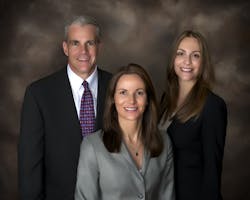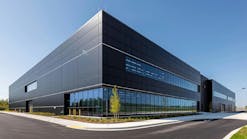When security dealers think of Alarm Capital Alliance (ACA), traditionally, it instantly brings with it visions of RMR multiples and eventual sale of the business. But ACA’s business model has been steadily evolving for more than decade now into a hybrid approach to security services that combines acquisitions, dealer programs and full direct-to-consumer residential security services — a model that has positioned the company for stable growth for years to come.
The newest element of ACA’s growth profile — the direct-to-consumer sales — has been an area of the company that has been growing organically through many of its early, and more recent acquisitions. “We are becoming a hybrid of an acquisition model, a dealer program, and now direct-to-consumer, competing with the ADTs, Vivints and everyone else out there,” explains Amy Kothari, President and CEO of Alarm Capital Alliance.
Understanding how the company has achieved this hybrid approach means looking back to how it all got started.
The Road to Organic Growth
Since 2000, ACA relied on the acquisition-based model of buying accounts from small to mid-sized alarm companies — the traditional “mom and pop shops” (and even larger firms) that did not have access to capital; did not necessarily want to sell to an ADT or a Monitronics, or sell to another regional player and have to sign a non-compete. “That was the niche available when we started in 2000,” Kothari says. “We would go in (on a factoring model) and buy the customer contracts, but it would stay in their name, and they would stay in business — essentially they would become our subcontractor.”
That original business model worked well for years; however, there came a time when ACA wanted to shift that model to give a uniform name across their entire network of dealers, while still allowing them to maintain their identity. “We couldn’t use ‘Alarm Capital Alliance’ — which clearly sounds like a finance company, because it’s not very consumer-friendly,” Kothari recalls.
At the time, ACA answered its phones as the generic ‘Alarm Center’ — and it got to the point where most of the residential customers actually thought the company’s name was Alarm Center. Thus the name “My Alarm Center” was born. “Customers became aware that they were ‘My Alarm Center’ customers, but they were serviced by their local service provider,” Kothari says. “It also afforded us the opportunity if the dealer went out of business, we could just strip out the name and the customer would remain with My Alarm Center and we could use other subcontractors in that area to service them.”
This is where the first seeds for true organic company growth were planted. As the model continued to evolve, ACA started seeing opportunities where some of the owner/operators of its acquired companies had retired or started new businesses, and their customers had simply become My Alarm Center customers. It prompted ACA to hire its own technicians to service those accounts and perform installations. “So slowly and organically, we started selling direct-to-consumer,” Kothari says.
A Changing Acquisitions Market
As we all know, the residential security industry as a very hot market — evidenced by new, extremely large companies entering the market, such as AT&T, Comcast, etc. The increased exposure and excitement surrounding residential security, the smart home and other automation technology has had a profound effect on the acquisitions market. “Because security really has the limelight on it now, the acquisition market has become tougher and tougher,” Kothari says. “Valuation expectations have gone up considerably in the last few years.”
Thus, it was increasingly making more sense for ACA to focus on its organic growth in the direct-to-consumer market. Instead of its traditional acquisitions as in the past, ACA began looking for companies that could provide an engine to drive a move into direct-to-consumer security services in a particular region. The most recent such move was its acquisition of Hawk Security Services in April 2014, which gave ACA a foothold in the Dallas/Ft. Worth area. “Not only did we buy all the customers and contracts there, but we also bought the engine, so now we are selling in that market and putting them on our own books,” Kothari explains.
IN all, ACA Is currently focused on six such regions. In addition to Dallas/Ft. Worth, other markets include Seattle, Los Angeles, Atlanta, the Philadelphia Tri-State area and Long Island, N.Y. “In those markets we are really focused on selling direct to consumer and doing installs,” Kothari says. “It’s one account at a time, but the costs end up being less than when we do an acquisition. It has been quite a learning experience — we now have a marketing team and a sales team, and other segments of the business that didn’t exist years ago.”
Still, ACA sees this organic growth as an addition to its business plan, not a replacement. “We’re not eliminating any of our growth platforms, so bulk acquisitions and dealer programs are all still a key part of our business model,” says Anastasia Bottos, ACA’s COO and Cheif Strategy Officer. “We are just adding the organic platforms to even everything out and offset some of the higher costs in the acquisition market.”
“(The organic growth) allows us to be more strategic in acquisitions,” Kothari adds. “Our focus now is much more from the perspective of acquisitions that tuck into our existing markets.”
Growth Hurdles
With the newer acquisition strategy, of course, came a few challenges. “We had the acquiring of customers and accounts down, but when we started doing these large portfolio brick-and-mortar acquisitions with employees, you are really integrating the culture as well as the accounts and assets you are purchasing,” Bottos explains. “That was the biggest challenge, because we had never done it before.”
Apparently, ACA found its footing. According to Bottos, ACA did not lose a single employee as a result of the Hawk acquisition. “Everyone was on board and was really excited about our business,” she says.
The hybrid business model is paying dividends for ACA, and has given the firm a chance to redefine and evolve its business model now and into the future. “This natural shift from the acquisition model to more of the organic growth model has given us more consistent, predictable growth,” Kothari says. “That puts us in a position to continue to look at every deal that comes onto the market and when there’s one that makes sense for us, we can be very competitive.”
Paul Rothman is Editor-in-Chief of Security Dealer & Integrator (SD&I) magazine (www.secdealer.com).






